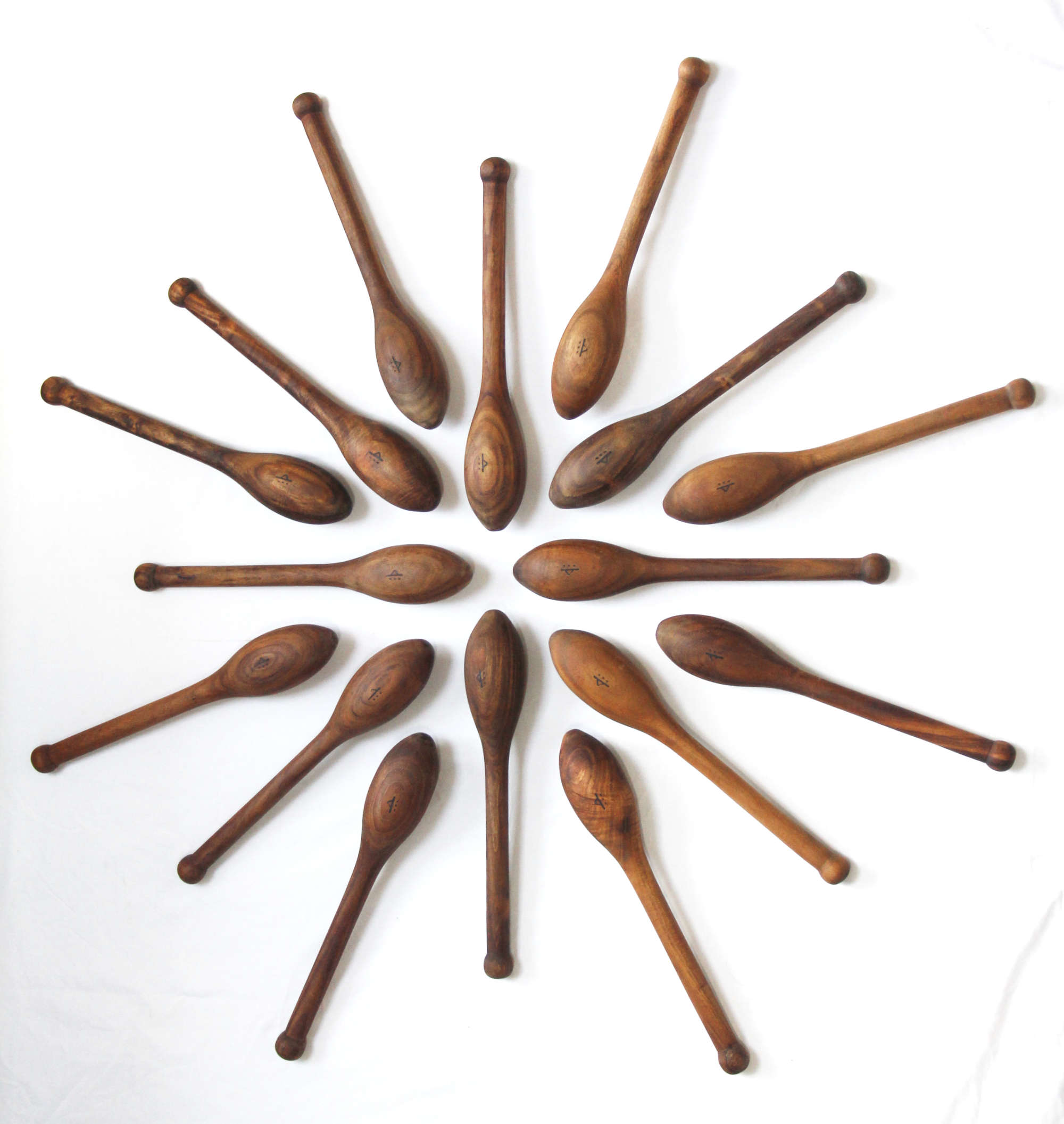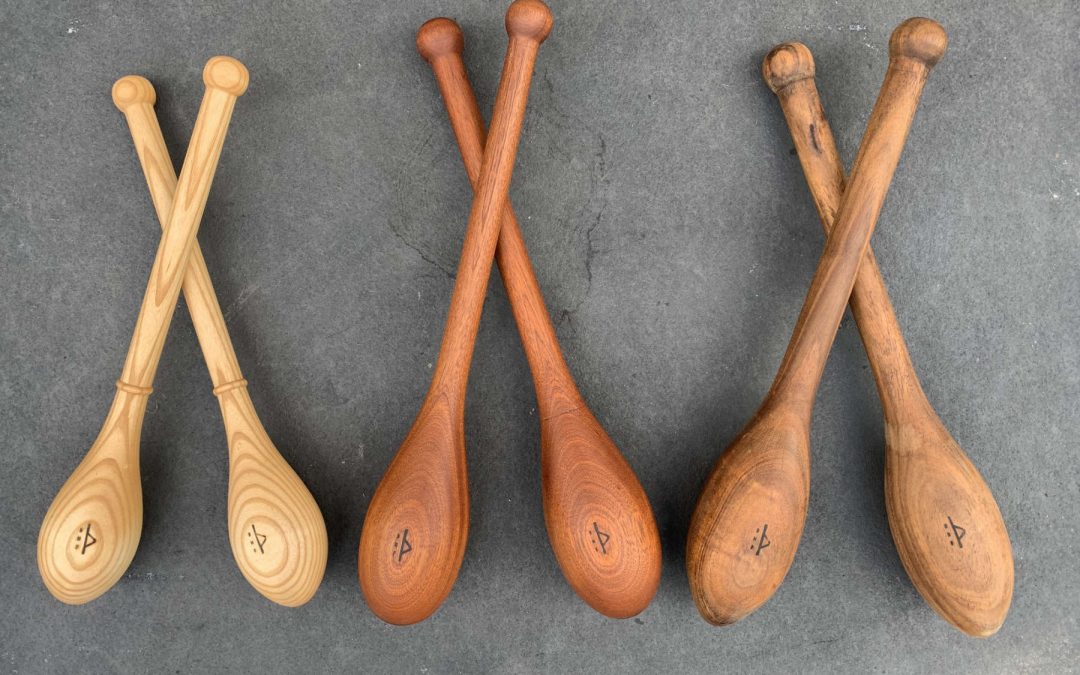It’s been a long wait, but I’m really pleased to announce the restock of our 800g walnut teardrop Indian clubs. Teardrops are among the lightest wooden clubs we make, and these ones are made from the same stunning walnut hardwood as our larger Indian clubs and Persian meels.
What are teardrop Indian clubs?
The teardrop became a popular Indian club shape during the late 1800’s – early 1900’s, a time often considered to be the golden age of club swinging. Teardrops tend to be lighter than regular shaped clubs of the same length, though they are no less challenging. While they are a fabulous club for performing complex and advanced patterns, teardrops remain a popular choice for simple and restorative movements too. If you are a physiotherapist looking for a club to perform rehabilitative exercises with, these are certainly one to consider.
The teardrop swing
With teardrop clubs, the centre of mass is shifted further from the grip than standard Indian clubs, which creates a more whip-like vector. This can be harder to control compared to the standard shape, so you may find yourself requiring a touch more mental and physical agility in order to respond to their quicker speed.
If you are new to the teardrop shape, you may wish to start with our lighter 300g ash or 600g sapele versions. These are easier to control, and great to have on hand for warming up, or experimenting with new or complex movements. Only once you feel confident with your lighter clubs is it safe to consider moving up to a heavier pair.
What muscles do teardrop clubs target?
Lightweight clubs allow you to really work your fingers and wrists, developing fast twitch muscle responses, flexibility, and finger dexterity and strength. This is quite a different experience to swinging heavier Indian clubs or Persian meels where the wrists and fingers are relatively static.
When swinging teardrop clubs, the rounded pommel should be held in the palm, functioning almost like a ball & socket joint. This allows for a ‘ring’ grip to be formed between the index or middle finger and the thumb. These subtle movements are a must when performing intricate wrist skills like Reels, Moulinettes, and Snake moves so make sure you take the time to nail them, or find a teacher who can help you.
A cautionary word of warning. Please always start with lighter clubs. Swinging heavy clubs in awkward angles and incorrect form can create injury to the joints. Start with light clubs, practice movements without struggling to control the weight, and you will begin to strengthen and condition the ligaments and tendons of the shoulder, elbow and wrist. Only consider increasing weight when you can safely perform a significant number of repetitions with ease. Heavy clubs carry a large degree of force and carry risk. So please take care, seek advice from qualified or experienced club swingers, personal trainers and coaches and practice as safely and mindfully as possible.



Comments 3